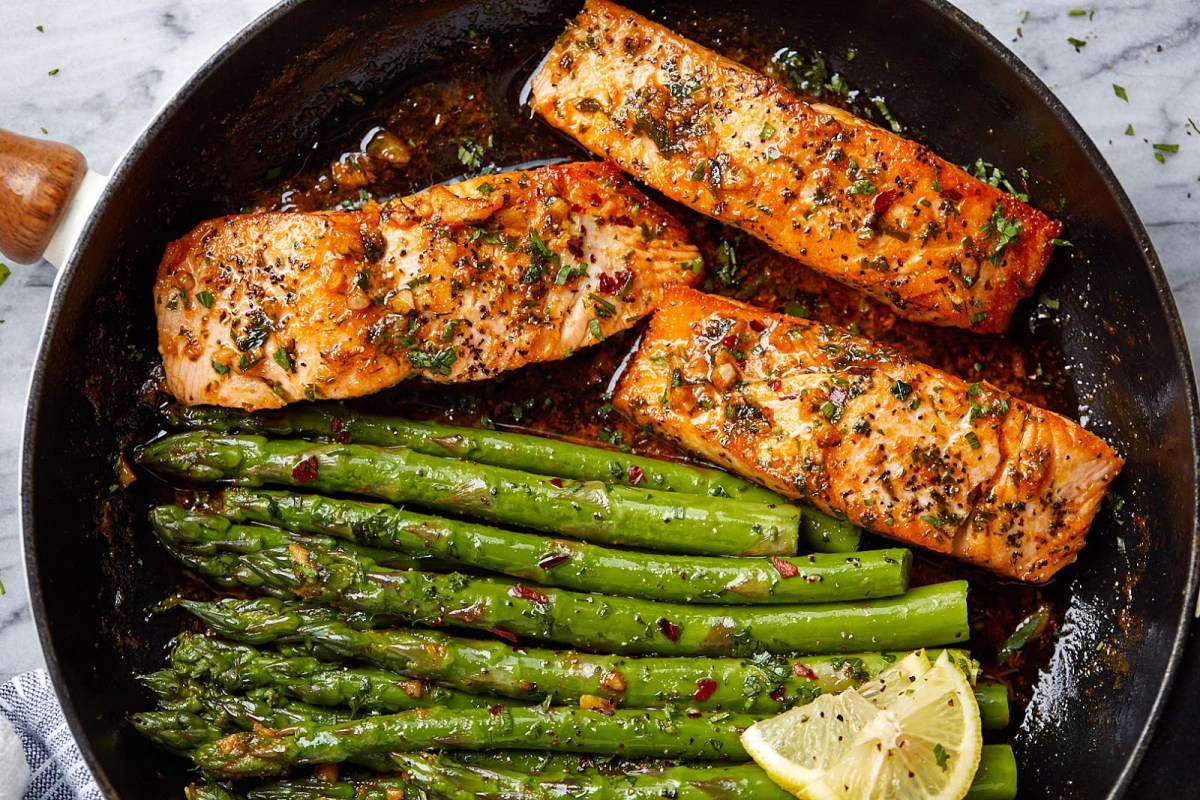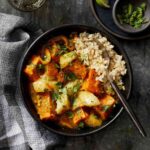Embark on a culinary journey that redefines healthy eating! This guide unveils the secrets to crafting delicious, low-carb meals that nourish your body and satisfy your cravings. We’ll explore vibrant vegetables, lean protein powerhouses, and healthy fats, transforming your clean-eating approach into an adventure of flavor and well-being. Prepare to discover simple, effective strategies that make healthy eating not just achievable, but genuinely enjoyable.
From quick weeknight dinners to satisfying snacks, we’ll provide you with a treasure trove of recipes and meal-prep tips. Imagine effortlessly creating balanced meals that support weight management, boost energy levels, and leave you feeling revitalized. This isn’t about restrictive diets; it’s about unlocking a vibrant, sustainable approach to nourishment.
Healthy Low-Carb Fats and Their Uses
Embracing healthy fats is crucial for a successful and fulfilling low-carb lifestyle. These fats provide satiety, support hormone production, and are essential for nutrient absorption. Choosing the right types of fats ensures you reap the maximum benefits while staying within your dietary goals.
Five Healthy Low-Carb Fats and Their Benefits
The following table details five healthy fats ideal for a low-carb diet, highlighting their nutritional profiles and associated health advantages. These fats offer a rich source of energy, support cellular function, and contribute to overall well-being.
| Fat Source | Type of Fat | Health Benefits |
|---|---|---|
| Avocado | Monounsaturated | Rich in fiber, potassium, and Vitamin K. Supports heart health, improves cholesterol levels, and promotes healthy digestion. |
| Olive Oil | Monounsaturated | High in antioxidants. Reduces inflammation, protects against heart disease, and may improve brain function. |
| Coconut Oil | Saturated | Provides medium-chain triglycerides (MCTs), which are easily digested and utilized for energy. May boost metabolism and support cognitive function. |
| Nuts (e.g., almonds, walnuts, macadamia) | Monounsaturated and Polyunsaturated | Excellent source of fiber, vitamin E, and healthy fats. Supports heart health, improves cholesterol levels, and contributes to satiety. |
| Fatty Fish (e.g., salmon, mackerel, sardines) | Omega-3 fatty acids | Rich in omega-3 fatty acids, EPA and DHA. Reduce inflammation, support brain health, and improve cardiovascular health. |
Incorporating Healthy Fats into Low-Carb Dishes
The following recipes illustrate how to easily incorporate these healthy fats into delicious and satisfying low-carb meals. Careful selection and preparation maximize the nutritional value and culinary appeal of these dishes.
Creamy Avocado Chicken Salad
This recipe uses avocado for its creamy texture and healthy fats, providing a satisfying and nutritious meal.
- Cook 2 chicken breasts until fully cooked and shred them.
- Mash one ripe avocado with a fork until smooth.
- Add 2 tablespoons of mayonnaise (ensure it’s low-carb), 1 tablespoon of lime juice, salt, and pepper to the mashed avocado.
- Gently fold in the shredded chicken.
- Serve on a bed of lettuce or enjoy it as a filling for celery sticks.
Pan-Seared Salmon with Roasted Asparagus
This recipe showcases the benefits of fatty fish and healthy fats, creating a flavorful and nutritionally balanced meal.
- Preheat oven to 400°F (200°C).
- Toss 1 bunch of asparagus with 1 tablespoon of olive oil, salt, and pepper.
- Roast asparagus for 12-15 minutes, or until tender-crisp.
- Season 2 salmon fillets with salt, pepper, and garlic powder.
- Heat 1 tablespoon of olive oil in an oven-safe skillet over medium-high heat.
- Sear salmon for 3-4 minutes per side, or until cooked through.
- Serve the pan-seared salmon alongside the roasted asparagus.
The Importance of Healthy Fats in a Low-Carb Diet
Healthy fats play a vital role in a low-carb diet, going beyond simply providing energy. They are essential for hormone production, particularly those related to satiety and metabolic regulation. Adequate fat intake also aids in the absorption of fat-soluble vitamins (A, D, E, and K), ensuring optimal nutrient utilization. Furthermore, healthy fats contribute to stable energy levels, preventing the energy crashes often associated with restrictive diets. The inclusion of diverse healthy fats ensures a balanced and effective low-carb approach.
Simple Low-Carb Meal Prep Strategies

Mastering low-carb, clean eating hinges on efficient meal preparation. A well-structured weekly plan not only simplifies your diet but also saves valuable time and money, ultimately boosting your adherence to your healthy eating goals. This section details a sample meal plan, provides step-by-step recipes, and guides you through efficient ingredient preparation for the entire week.
Weekly Low-Carb Meal Plan and Recipes
This plan emphasizes lean proteins, healthy fats, and non-starchy vegetables. Each meal provides approximately 20-30 grams of net carbs, a figure that can be adjusted based on individual needs and preferences. Remember to always check nutrition labels and adjust portion sizes as necessary.
- Monday: Sheet Pan Lemon Herb Chicken and Asparagus: Preheat oven to 400°F (200°C). Toss 1 lb chicken breasts with 1 tbsp olive oil, lemon juice, dried herbs (rosemary, thyme), salt, and pepper. Arrange on a baking sheet with 1 bunch asparagus. Bake for 20-25 minutes, or until chicken is cooked through and asparagus is tender-crisp. Step-by-step: 1. Preheat oven. 2. Marinate chicken. 3. Arrange chicken and asparagus on sheet pan. 4. Bake until cooked.
- Tuesday: Ground Beef and Cauliflower Rice Stir-Fry: Sauté 1 lb ground beef with 1 onion and 2 cloves garlic. Add 1 head of cauliflower, riced, and stir-fry for 5-7 minutes. Season with soy sauce (low-sodium), ginger, and sesame oil. Step-by-step: 1. Brown ground beef. 2. Add onion and garlic. 3. Stir in riced cauliflower. 4. Season and serve.
- Wednesday: Salmon with Roasted Broccoli: Season 2 salmon fillets with salt, pepper, and dill. Roast at 400°F (200°C) for 12-15 minutes. Roast 1 head of broccoli florets alongside the salmon for the last 10 minutes. Step-by-step: 1. Season salmon. 2. Roast salmon. 3. Add broccoli during the last 10 minutes of cooking.
- Thursday: Zucchini Noodles with Pesto and Shrimp: Spiralize 2 zucchini into noodles. Sauté 1 lb shrimp with garlic and olive oil. Toss zucchini noodles with pesto and shrimp. Step-by-step: 1. Spiralize zucchini. 2. Sauté shrimp. 3. Combine zucchini noodles, pesto, and shrimp.
- Friday: Chicken Salad Lettuce Wraps: Combine cooked chicken (leftover from Monday), mayonnaise, celery, onion, and seasonings. Serve in lettuce cups. Step-by-step: 1. Shred cooked chicken. 2. Mix with mayonnaise and other ingredients. 3. Spoon into lettuce cups.
- Saturday: Steak with Green Beans: Pan-fry or grill a steak to your liking. Steam or roast 1 lb green beans. Season both with salt and pepper. Step-by-step: 1. Cook steak. 2. Cook green beans. 3. Season and serve.
- Sunday: Omelet with Spinach and Mushrooms: Whisk 3 eggs with milk or cream. Sauté spinach and mushrooms. Pour egg mixture into a pan and cook until set. Add spinach and mushrooms. Step-by-step: 1. Whisk eggs. 2. Sauté vegetables. 3. Cook omelet. 4. Add vegetables.
Weekly Ingredient Preparation Guide
Visualize your kitchen counter divided into sections: one for proteins (chicken breasts, ground beef, salmon, shrimp, steak), one for vegetables (asparagus, cauliflower, broccoli, zucchini, green beans, spinach, mushrooms), and one for pantry staples (oils, herbs, spices, sauces). Begin by washing and chopping all vegetables. Store them in airtight containers, separating items based on their use in the recipes. Prepare the cauliflower rice. Marinate the chicken for Monday’s meal. Portion out the ingredients for each day’s meal into individual containers, ready for quick assembly. This visual organization ensures you spend minimal time prepping each day.
Benefits of Low-Carb Meal Prepping
Meal prepping significantly streamlines the low-carb, clean-eating journey. The time saved each day is substantial, preventing the temptation of quick, unhealthy choices. Purchasing ingredients in bulk often reduces overall food costs. Furthermore, having prepared meals readily available enhances adherence to the diet, leading to consistent results and better overall health outcomes. For example, a busy professional might spend an hour on Sunday prepping meals, saving 30 minutes each weekday evening. This extra time could be used for exercise, relaxation, or other activities, improving overall well-being.
Unlocking a healthier, happier you starts with the food you choose. This guide has equipped you with the knowledge and recipes to confidently navigate the world of low-carb, clean eating. Remember, this is a journey, not a race. Embrace the delicious possibilities, celebrate your progress, and enjoy the transformative power of mindful eating. Your vibrant, energized self awaits!
Q&A
Can I still eat fruits on a low-carb diet?
Yes, but in moderation. Berries are generally lower in carbs than other fruits. Prioritize nutrient-dense options and watch your overall carb intake.
What are the potential downsides of a low-carb diet?
Some potential downsides include nutrient deficiencies if not planned carefully, “keto flu” in the initial stages (headaches, fatigue), and possible constipation. Adequate hydration and balanced nutrient intake are crucial.
How much protein should I consume on a low-carb diet?
Protein intake should be individualized, but generally, aim for a moderate to high protein intake to support satiety and muscle mass. Consult a healthcare professional or registered dietitian for personalized recommendations.
Is a low-carb diet suitable for everyone?
No, a low-carb diet may not be suitable for everyone. Individuals with certain medical conditions should consult their doctor before starting any restrictive diet.


